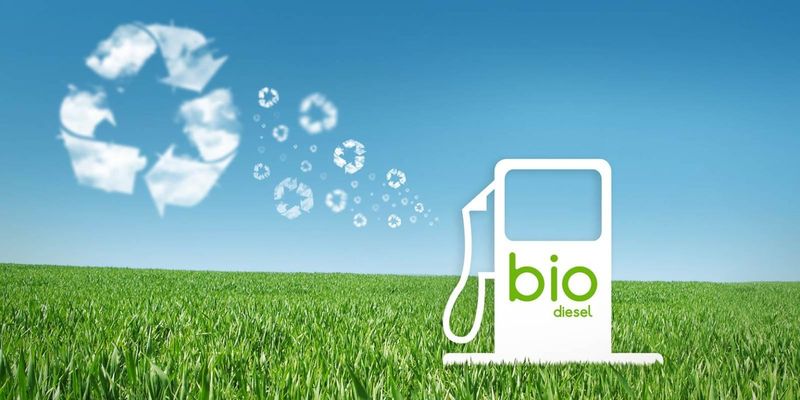Biofuels may seem like the green solution for shipping, but they come with safety risks and operational challenges. Learn the real hazards, from fuel stability to fire risks, and how maritime professionals can use safety modeling to mitigate them.

Why this topic matters in modern maritime operations
As the global maritime industry accelerates its shift toward low-emission fuels, biofuels are receiving significant attention. Their promise? Lower lifecycle greenhouse gas (GHG) emissions, drop-in compatibility with existing engines, and fewer infrastructural changes than hydrogen or ammonia. The International Maritime Organization (IMO) and regional regulators, such as the European Commission under FuelEU Maritime, now actively encourage biofuel adoption in line with the IMO 2023 GHG Strategy.
Yet, as shipping companies begin testing and deploying biofuels, a quieter but vital conversation is emerging: Are biofuels safe enough for widespread operational use?
For maritime students and early-career professionals, this is not just a theoretical question. It’s an urgent one, with real implications for engine performance, crew health, maintenance schedules, and even vessel insurance.
This article explores why biofuels aren’t risk-free, what types of operational hazards they pose, and how safety modeling tools and risk-based frameworks can help manage their use on board.
–
Understanding biofuels: not all are created equal
“Biofuel” is a broad term. In shipping, it usually refers to:
- FAME (Fatty Acid Methyl Ester): Derived from plant oils or animal fats, commonly referred to as biodiesel.
- HVO (Hydrotreated Vegetable Oil): A cleaner, more stable synthetic paraffinic fuel.
- B100/B20 blends: Referring to the percentage of biofuel blended with conventional diesel.
- Advanced biofuels: Made from non-food biomass or waste feedstocks.
Each type has different characteristics affecting combustion, stability, microbial growth potential, and fire risk. The operational hazards vary depending on the feedstock, processing method, storage conditions, and blend ratio.
–
Key operational hazards of marine biofuels
Fuel instability and oxidation
FAME-based biofuels are prone to oxidation, especially when exposed to oxygen, light, and heat. This can lead to:
- Formation of gums and sediments.
- Injector fouling.
- Filter blockages.
In one DNV case study (2022), a ferry running B30 reported fuel filter clogging within 100 hours, requiring engine shutdown and manual intervention.Safety modeling tip: Use probabilistic failure models to assess the likelihood of filter blockages under different storage and ambient conditions.
Water contamination and microbial growth
Biofuels are hygroscopic — they attract and absorb water. This sets the stage for microbial contamination, commonly known as diesel bug. Bacteria and fungi can:
- Produce corrosive by-products.
- Block filters.
- Damage injection systems.
According to Lloyd’s Register (2023), vessels storing FAME blends for more than 30 days face a 35% higher risk of microbial blooms without biocide treatment or fuel polishing systems.
Cold flow problems
Biofuels typically have higher cloud points and pour points, meaning they can gel or solidify at higher temperatures compared to marine gas oil (MGO). This is critical for vessels operating in colder climates or storing biofuels in deck tanks. If the fuel gels, fuel pumps and injectors can be starved, potentially leading to a loss of propulsion.
Solution modeling: Cold flow behavior should be simulated using CFPP (Cold Filter Plugging Point) data and integrated into voyage planning software.
Combustion and fire safety concerns
Some biofuels, particularly high-FAME blends, have:
- Lower flashpoints, sometimes below the 60°C minimum set by the SOLAS Convention.
- Higher autoignition temperatures, altering ignition timing and cylinder pressure profiles.
- Increased soot and deposit formation, especially if mixed with low-quality MGO.
IMO’s IGF Code requires that alternative fuels meet defined safety thresholds. When biofuels fall outside this envelope, a risk-based assessment (RBA) must be performed.
Material compatibility and corrosion
Biofuels can degrade certain materials, such as:
- Nitrile rubber seals.
- Copper and brass components.
- Older plastic and polymeric linings.
According to Wärtsilä’s engine test program (2021), high-FAME fuels required modifications to gaskets and elastomers on legacy engines.
Emission control technology compatibility
Biofuels may interact unpredictably with scrubbers, selective catalytic reduction (SCR) systems, and exhaust gas recirculation (EGR) units. Example: Some vessels experienced increased SCR fouling when running high-biofuel blends due to elevated ash or sulfur content in non-standard fuels.
–
Safety modeling frameworks to manage biofuel risks
ISO 31000: Risk Management Guidelines
This standard provides a generic framework for identifying, assessing, and mitigating risks. Applied to biofuels, it enables:
- Consistent hazard identification.
- Evaluation of likelihood and consequences.
- Prioritisation of mitigation actions.
Maritime companies can tailor ISO 31000 to model:
- Tank storage risk profiles.
- Bunkering process hazards.
- Engine room fuel handling procedures.
IMO Formal Safety Assessment (FSA)
FSA is the IMO-endorsed five-step approach used in rule-making and alternative fuel safety cases. Steps include:
- Hazard identification.
- Risk assessment.
- Risk control options.
- Cost-benefit assessment.
- Recommendations.
A vessel using non-SOLAS-compliant biofuels (e.g., with flashpoint <60°C) must often undergo a formal safety case using the FSA method.
Computational fluid dynamics (CFD) and fire modeling
CFD tools allow ship designers and safety officers to model:
- Fuel spray behavior in leaks.
- Flashpoint and ignition envelope.
- Fire propagation in engine rooms.
Programs like Fire Dynamics Simulator (FDS) or ANSYS Fluent are now used by class societies and research teams to model worst-case events.
Fault tree and event tree analysis (FTA & ETA)
FTA maps how component failures (e.g., filter clogging) can escalate to system-level failures (e.g., engine shutdown). ETA simulates scenarios triggered by initial events (e.g., microbial contamination leading to fuel starvation).
These tools are useful for:
- Emergency preparedness modeling.
- Crew training scenario planning.
- Insurance risk profiling.
–
Real-world applications and incidents
The Port of Rotterdam pilot (2021)
Several tugboats operated by Kotug International used B30 and B50 blends. Within 6 months:
- Increased sludge was observed in settling tanks.
- Two incidents of injector clogging occurred.
- Biocide treatment protocols and fuel polishing routines were added.
MAIB incident review: Engine failure on UK-flagged Ro-Ro
In a 2022 Marine Accident Investigation Branch (MAIB) report, a vessel suffered propulsion loss in the English Channel. Root cause: Biofuel-induced microbial contamination had clogged the fuel filters.
Wärtsilä testbed learnings
Wärtsilä’s long-term testing of HVO and FAME revealed:
- Need for tighter fuel quality monitoring.
- Increased injector maintenance intervals.
- Emphasis on fuel conditioning equipment, including separators and filtration.
–
FAQ: Biofuel Safety in Maritime Operations
Isn’t biofuel safer because it’s cleaner and renewable?
Cleaner does not mean safer. Biofuels introduce risks like microbial growth, filter clogging, and material degradation.
Do biofuels meet SOLAS fuel safety requirements?
Only some do. Fuels with flashpoints below 60°C fall outside SOLAS Chapter II-2 requirements and need a risk-based safety case.
How should ships store biofuels safely?
Biofuels should be stored in clean, dry tanks with water separators. Storage time should be minimized. Monitoring systems for microbial growth and temperature are advised.
Are crew training requirements different for biofuels?
Yes. Crew must understand fuel-specific handling procedures, emergency response to contamination or gelling, and material compatibility.
Can biofuels be used with scrubbers and EGR?
Potentially, but interactions must be validated. Some biofuels may alter exhaust chemistry and impact emissions control system performance.
–
Conclusion: Green isn’t always simple
Biofuels offer real opportunities for decarbonising maritime transport, especially as transitional fuels before the full arrival of hydrogen, ammonia, or nuclear propulsion. However, their adoption is not without consequence.
By understanding operational hazards and applying structured safety modeling frameworks, maritime professionals can deploy biofuels more safely. For students, learning these risk tools now will be a career asset, especially as regulators demand deeper technical justifications for alternative fuel use.
Actionable advice: Integrate safety modeling tools like FSA, CFD, and FTA into your academic projects and simulator training. Biofuels may be renewable, but safety knowledge is what makes them truly sustainable.
References
- International Maritime Organization. (2023). IMO Strategy on Reduction of GHG Emissions
- Lloyd’s Register. (2023). Biofuels in Shipping: Technical Guidance
- DNV. (2022). Biofuel Operational Risks
- Wärtsilä. (2021). Biofuel Testing Summary
- MAIB. (2022). Marine Accident Report: Biofuel and Filter Clogging
- Fire Dynamics Simulator. (2023). NIST Fire Modeling Software
- ISO. (2018). ISO 31000 Risk Management Guidelines


some truly fantastic information, Sword lily I discovered this.